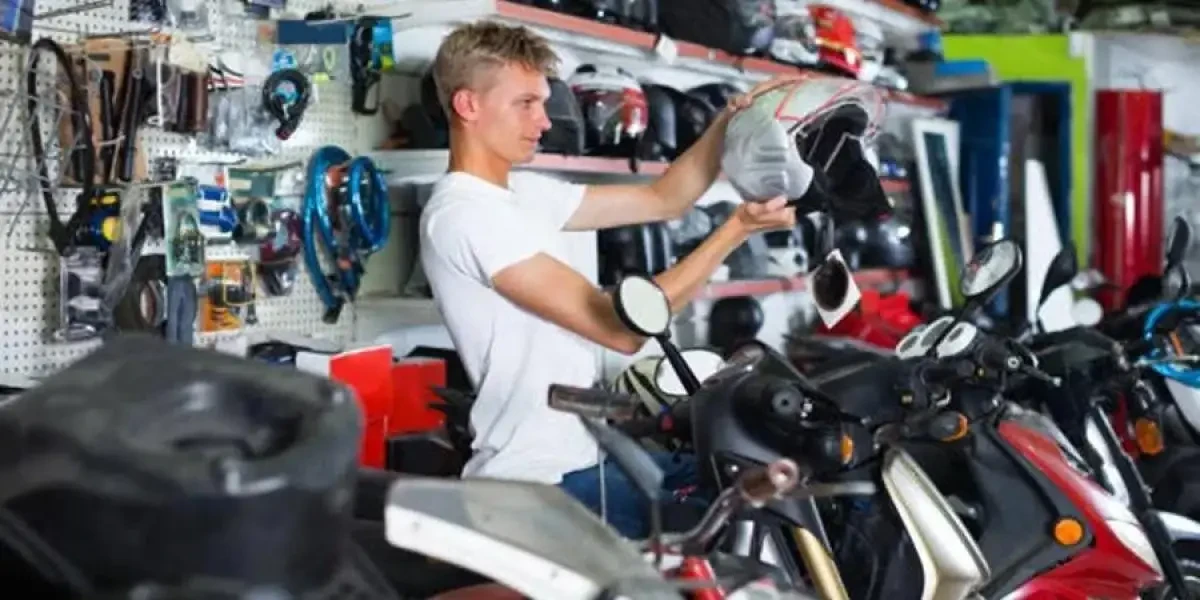Check Out the current Motocross Gear NZ for every single Degree of Rider
Check Out the current Motocross Gear NZ for every single Degree of Rider
Blog Article
Grasping Bike Gears: Exactly How to Optimize Your Riding Experience
In the realm of motorcycling, grasping the art of equipment adjustment is critical for improving your riding efficiency. Effectively utilizing and recognizing motorcycle gears can dramatically impact control, fuel, and velocity efficiency, changing an average adventure right into a smooth, exhilarating trip. By including accurate shift timing and adjusting gear choice to various roadway conditions, cyclists can make certain optimal engine performance and security. The nuances of clutch control, throttle coordination, and equipment technicians beckon a deeper expedition, assuring to open the full potential of your machine. Just how can these strategies be taken advantage of to truly enhance your riding experience?
Comprehending Equipment Mechanics
At the core of motorbike dynamics, equipment mechanics play a pivotal duty in converting engine power right into movement, eventually dictating rate and control. The gear ratios, meticulously developed, determine the relationship between engine transformations and wheel turns, impacting velocity and fuel efficiency.
Comprehending gear auto mechanics begins with recognizing the importance of the transmission, which houses several equipments of varying dimensions. These equipments interact via a process understood as meshing, where teeth of different equipments involve to transmit power.
Additionally, the concept of equipment changing is important to making best use of performance. Prompt and smooth changes make certain that the engine operates within its optimum power band, preventing unnecessary pressure and enhancing long life (mx gear nz). By understanding these mechanical ins and outs, cyclists can accomplish a harmonious mix of power, control, and performance, boosting their riding experience
Timing Your Shifts
Shift timing mastery is vital for enhancing motorcycle performance and enhancing the riding experience. Effectively timed changes guarantee that the engine operates within its optimum power band, which is critical for maintaining control, achieving smooth velocity, and ensuring the longevity of the bike. Cyclists need to develop an instinctive feeling of when to shift gears, which involves recognizing the partnership in between engine transformations per minute (RPM) and speed.
To master shift timing, pay close attention to the engine's noise and feel, as these provide vital clues concerning when to alter equipments. When the engine approaches the upper array of its power band without reaching the redline, the excellent change factor usually happens - motocross gear. Moving too early can bring about a lack of power, while shifting far too late may cause unnecessary engine stress
Furthermore, roadway problems and riding style influence shift timing. In comparison, during freeway riding, less shifts at greater speeds can be extra suitable.
Enhancing Gas Efficiency
While mastering motorbike equipments is crucial for performance, boosting fuel effectiveness is similarly important for both ecological and economic factors. Ideal fuel usage not just reduces functional costs yet additionally minimizes the environmental impact of riding. To accomplish this, one should comprehend the complex partnership between gear selection and engine performance.
Firstly, selecting the ideal gear at ideal rates can considerably influence fuel usage. Riding in a higher equipment at reduced speeds can lead to engine carrying, which is harmful to both fuel economic situation and engine health. Alternatively, riding in lower equipments at broadband results in unneeded gas consumption. Thus, maintaining an optimal equilibrium by changing equipments in placement with roadway conditions and prepared for maneuvers is necessary.
Additionally, normal upkeep plays a pivotal role in gas performance. Ensuring that the bike is well-tuned, with tidy air filters and correctly blew up tires, can minimize and enhance aerodynamics gas wastage. Furthermore, embracing a riding style that accepts steady velocity and smooth deceleration can add to better gas economic climate.

Methods for Smooth Transitions
Achieving smooth equipment shifts is basic to improving the riding experience and ensuring the durability of a motorbike's transmission system. Appropriate equipment moving not just contributes to a seamless ride yet additionally lessens damage on the mechanical parts. To understand the art of smooth changes, motorcyclists need to concentrate on a couple these details of key methods.

Secondly, clutch control plays a crucial role. Engaging and disengaging the clutch smoothly requires method. The clutch bar ought to be launched slowly, enabling a smooth transfer of power from the engine to the wheels without triggering a shock or abrupt activity.

Adjusting to Roadway Problems
Browsing varied road problems is an essential skill for any type of motorcyclist aiming to maintain control and safety and security. Whether you're riding on wet surfaces, gravel roadways, or browsing sharp turns, your capability to adapt your equipment usage and riding technique is vital. Recognizing how to adjust your equipments appropriately can significantly impact grip and stability, guaranteeing a more secure trip.
On wet roadways, it is advisable to preserve higher equipments to lower torque and minimize wheel spin. This method aids keep hold on slippery surface areas, permitting smoother acceleration and deceleration. In comparison, when riding on gravel or uneven surface, lower equipments are more suitable. Reduced equipments offer better control and allow you to react even more swiftly to unanticipated changes in the roadway surface.
Sharp curves require accurate gear monitoring to balance speed and control. Downshifting before entering a curve can help maintain momentum while making sure the bike remains stable read review throughout the turn. Constant practice in different conditions improves your ability to predict and respond to changes in road structure and incline.
Conclusion
Mastering motorbike gears significantly improves the riding experience by enhancing control, velocity, and fuel performance. Adapting gear option to different road problems, such as making use of higher equipments on damp surface areas and lower equipments on gravel, more enhances handling and safety.
Understanding gear mechanics begins with acknowledging the relevance of the transmission, which houses numerous gears of differing dimensions. These gears connect with a procedure recognized as meshing, where teeth of different equipments involve to send power (motocross parts nz). Mild changes to the throttle throughout equipment shifts can prevent jerky movements and keep a constant riding rate
Whether you're riding on wet surface areas, crushed rock roads, or browsing sharp turns, your capability to adapt your equipment article source use and riding strategy is critical. Adapting equipment option to various road conditions, such as using higher equipments on damp surface areas and lower gears on gravel, more boosts handling and safety.
Report this page